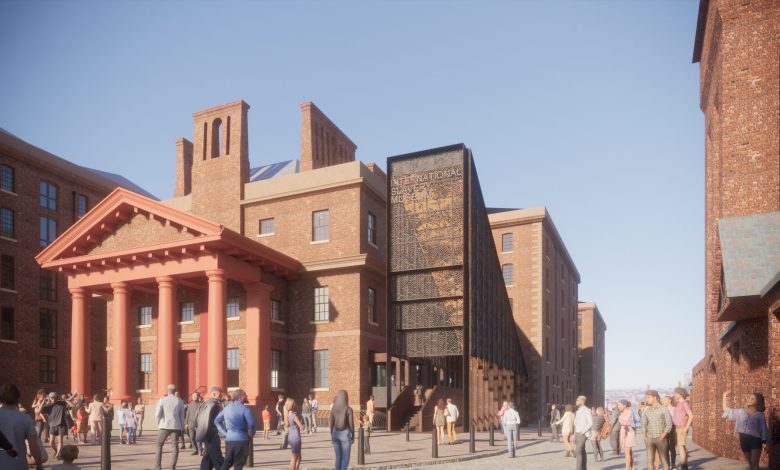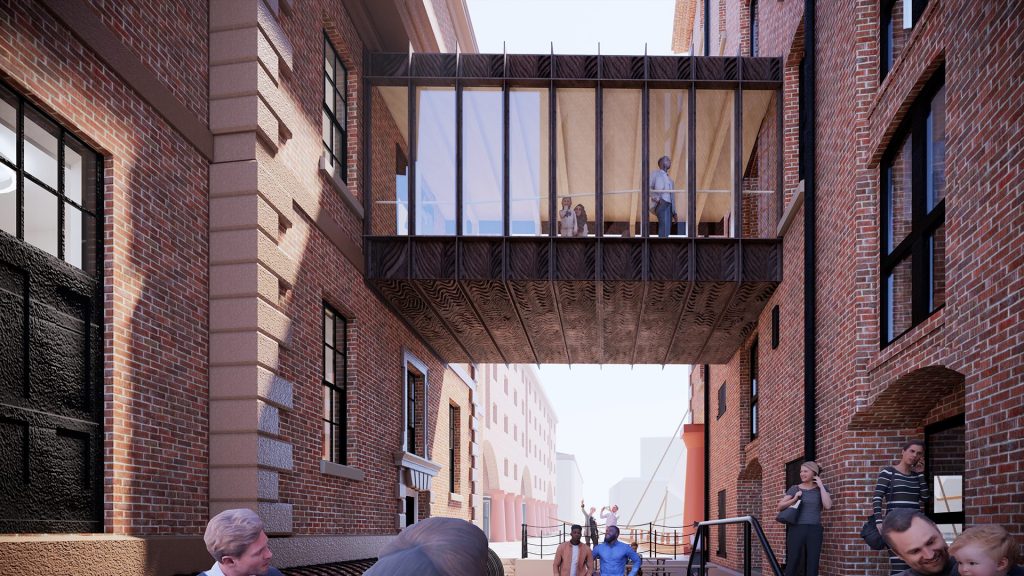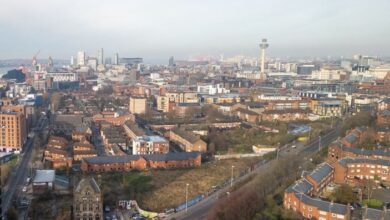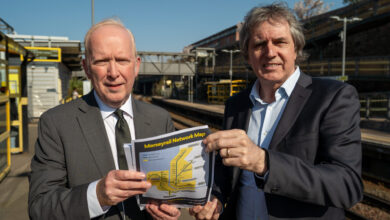Planning approved for International Slavery Museum and Maritime Museum redevelopment

National Museums Liverpool is a step closer to realising its ambition for the city’s waterfront, after planning permission was approved to redevelop the International Slavery Museum and Maritime Museum.
The transformed museums will centre around people – past, present and future, local, national and international – to create dynamic, welcoming spaces that meaningfully address contemporary issues.

Those whose lives have been most affected by the histories being told are playing a fundamental role in the development of both museums.
Both venues will close in early 2025 for works to begin, reopening to the public in 2028.

Ray Quarless, member of RESPECT Group and ISM Community Champion, said:
“We can now take ownership of our past and reset the course of history in the interest of future generations.”
Laura Pye, Director, National Museums Liverpool, said:
“This important milestone represents the hard work and dedication of all those involved in the redevelopment of both the International Slavery Museum and Maritime Museum. Throughout the process we have been guided by our community stakeholders and this bold and exciting approach is a testament to their energy, knowledge and experience, alongside the powerful collections and stories both museums hold.”
Kossy Nnachetta, Partner and Architect at Feilden Clegg Bradley Studios, said:
“We are excited about the designs; the engagement they encourage and the stories they tell. This project – like both museums within it – embodies a determination that our collective and shared history is expressed. It boldly addresses themes of restorative justice through space; which is fitting for the first museum in the world dedicated to the transatlantic slave trade. Liverpool, the UK and the world is ready for this.”
Catherine Dewar, Historic England’s North West Regional Director, said:
“We welcome the approval of National Museums Liverpool’s proposals to revitalise the Maritime Museum and to move the entrance of the International Slavery Museum into the Dr. Martin Luther King Jr Building (former Dock Traffic Office). A core aspiration of this move is to emphasise the importance of Black people’s stories to Liverpool’s history. We believe that the scheme has been designed with thoughtful consideration to its sensitive surroundings, but also importantly gives due prominence to an underrepresented element of history that is linked to the Royal Albert Dock.”
The redevelopment will see the Dr Martin Luther King Jr Building transform into a prominent new entrance to the International Slavery Museum. A new Entrance Pavilion will create an inspiring welcome and a stronger sense of identity for the museum. Internally, the building will become a space for learning and community. A striking iron and glass bridge will connect the re-imagined International Slavery Museum galleries in the Hartley Pavilion to the Dr Martin Luther King Jr Building and offer spectacular views both into and out of the Royal Albert Dock.
Maritime Museum’s improved visitor welcome and orientation space will enable visitors to appreciate the historic fabric and scale of the building on arrival. There will also be better circulation for visitors and enhanced commercial facilities, including a shop, café and events spaces.

National Museums Liverpool has also worked closely with a variety of organisations including Historic England, Merseyside Civic Society and Liverpool City Council on the development plans.
In January 2024, National Museums Liverpool announced the appointment of Feilden Clegg Bradley Studios (FCBStudios) as the new team leading the architectural design of the £58m major redevelopment of the International Slavery Museum and Maritime Museum. The practice has been working with key members of the University of Liverpool: School of Architecture, in facilitating community conversations.
Ralph Appelbaum Associates, who were appointed in 2022, are leading on the exhibition design for both museums.
This project is made possible with £9.9million from The National Lottery Heritage Fund, with thanks to National Lottery Players.
The redevelopment of International Slavery Museum and Maritime Museum is part of the wider Waterfront Transformation Project which aims to link storytelling, heritage, community and hospitality to create a rich visitor experience and be a catalyst for social and environmental improvements in the area.
Architectural Response by Kossy Nnachetta; Partner, Lead Architect, Feilden Clegg Bradley Studios:
Two Museums, One Vision.
Transforming International Slavery Museum and Maritime Museum
These two inspiring museums, join in the transformation of Liverpool waterfront: telling the full story of Britain’s maritime history in tandem with its role in the transatlantic slave trade.
The project sensitively responds to the existing Grade I-listed buildings; the Hartley Pavilion and the Dr Martin Luther King Jr Building, previously the Dock Traffic Office, understanding their civic value and cherished nature, to reimagine and revitalise them. They will be settings for storytelling, heritage, community, and hospitality. A rich visitor experience and a catalyst for social change in Liverpool, the UK and beyond.
The project develops new galleries for both museums, as well as shared spaces for community uses, research, learning and events. Visitor facilities will also be revitalised, including a shop, café, event space and restaurant. All of which work within National Museums Liverpool’s aspirations to decarbonise both existing buildings.
The Maritime Museum’s welcome spaces will be reconfigured to fully engage with its surroundings and provide an enhanced visitor experience.
Links
A new contemporary Link Bridge will connect the two buildings, allowing the stories of both museums to weave seamlessly together, whilst providing a beautiful pause-point with panoramic views across the docks. Here visitors can stop and consider that the stories gathered in the exhibitions are not far-off narratives but relate to the place they currently stand. Britain’s maritime exploits and the transatlantic slave trade are all part of the story of Liverpool, part of the story of us all.
Remembering
This project also creates a distinctive new entrance for International Slavery Museum that is worthy of its global agenda as the first and only museum in the world dedicated to the transatlantic slave trade. The Entrance Pavilion is a unified arrival experience, preparing visitors for the journey within. A monumental sculpture, remembering Liverpool’s historic role in transatlantic slavery whilst being a beacon of hope for a more inclusive and equitable future. It is Restorative Justice through space.
Stories
Decades of co-production with community groups and National Museums Liverpool, will be expressed in the detail of the Entrance Pavilion. The ironwork façade will artistically express this journey, whilst the integrated balustrade timeline will show the story of International Slavery Museum from its origins 30 years ago as a gallery in the basement of Maritime Museum, to finally receiving recognition in its own right. This will sit in the timeline within the context of Liverpool’s history with transatlantic slavery and, it’s modern-day consequences.




